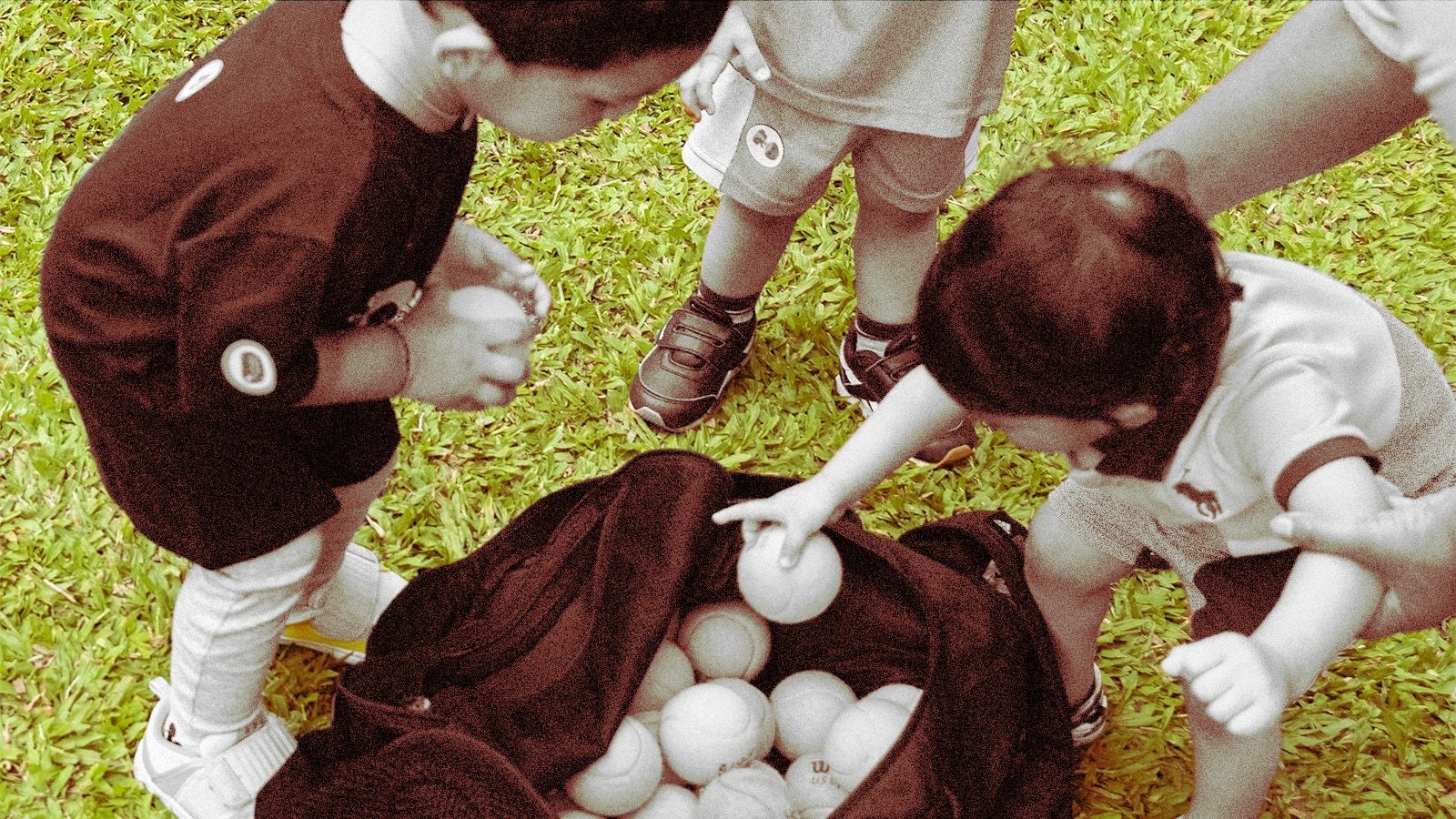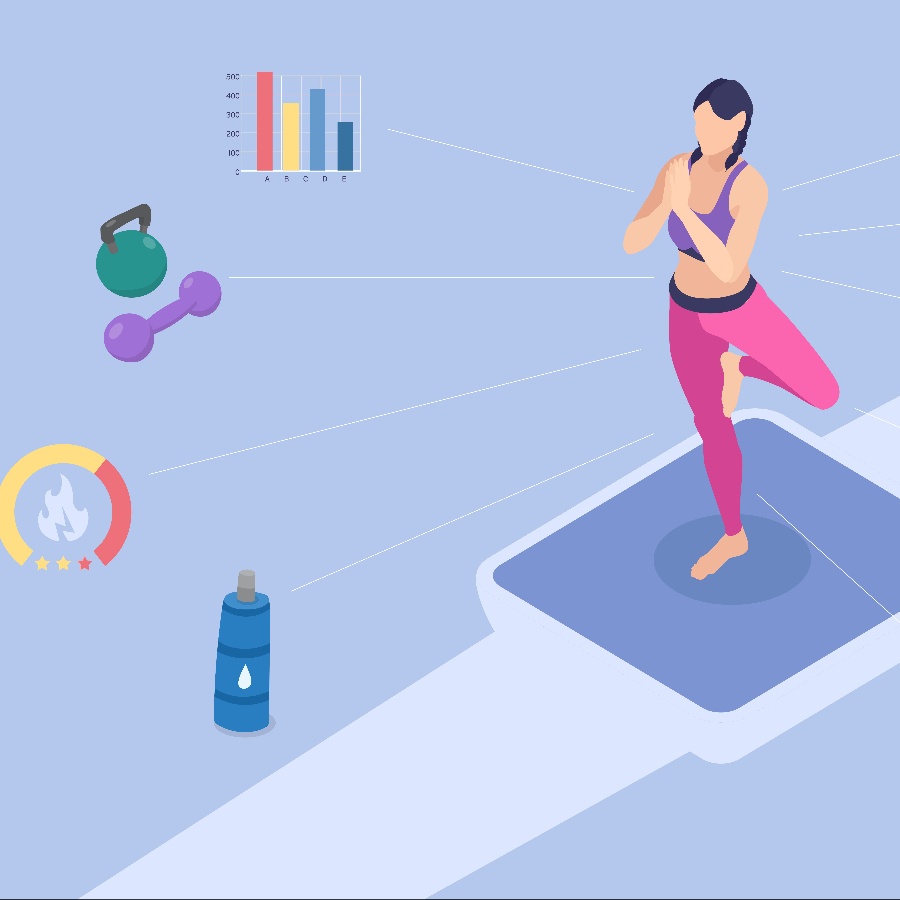This week, I went with my friend Harshana to watch her two-year-old navigate what looked like a scaled-down training arena: balls tossed in the air, cones arranged in neat little patterns, and a semicircle of toddlers taking it all in with surprising seriousness. Every time a child followed an instruction (“Red cone to yellow cone!”), the moms around me lit up like they’d just watched their kid solve the global hunger crisis.
It was adorable and super earnest, and, in a very millennial way, it made perfect sense.
We—all 30-somethings—grew up with dial-up internet, strict PT teachers, and that one uncle who always told you to “go play downstairs”. We grew up on unstructured play and make-your-own-way childhoods, and maybe that’s why we became the generation obsessed with planners, spreadsheets, routines, and habit stacks. So, it makes sense that toddler fitness classes (tiny versions of the boot camps many of us do as adults) have become wildly popular across Mumbai.
Snack time, nap time, workout time
The trainers behind these classes have become minor celebrities in their own right. Sagar Kapur, who runs a toddler boot camp that’s often booked months in advance, told me the whole idea began when he was still training adults.
“I used to run boot camps for grownups,” he says. “One day I thought, if a 35-year-old can enjoy running from a red cone to a blue cone, why can’t a two-year-old enjoy it too?” What began as a simple experiment quickly became a structured programme focused on gross motor skills, balance, and hand-eye coordination. “People think toddlers are just running around,” he adds, “but they’re learning body structure, coordination, and muscle memory, which are the foundation for every sport they’ll ever try.”
In his class, a toddler waiting for a foam ball to fall learns more than timing; they’re practising concentration. “The duration they can focus slowly increases. Twenty minutes, then 25, then 30,” he explains. “Even listening when I say, ‘Break time, go drink water and come back,’ requires focus.” Over months, he says, this habit of listening, following, and repeating slowly shapes their attention span, even beyond the studio.

There’s another layer to the city’s toddler-fitness enthusiasm—the social one. As Kapur puts it, “I get three kinds of parents. One: parents who are really fit and want that for their kids. Two: parents who never did anything themselves and don’t want their kids to miss out. And three: follow-the-leader parents. ‘Everyone is joining Sagar Sir, so we must join too.’” He’s realistic about the last category. “Honestly, it’s fine. If I want to build awareness about fitness early in life, I need to be in the system. Once they’re here, I just have to show progress.”
Word of mouth, especially in Mumbai, is powerful. A few celebrity clients—he trains the children of Shah Rukh Khan, Shahid Kapoor, Kareena Kapoor Khan, and others—don’t hurt either. But most parents stay because their kids enjoy it and improve. “Some kids train with me for two or three years,” he says, “and maybe they don’t continue later. But what they’ve absorbed is the idea that fitness is important. That’s enough.”
KPIs for babies
Another major figure in Mumbai’s toddler-fitness scene is Himay Chikani of Athletix, whose approach is more analytical. Before working with toddlers, he trained older kids, which gives him a vocabulary for movement that is both gentle and precise. His classes involve monkey crawls, landing drills, tiny jumps, grip work, and soft tests of spatial awareness, all disguised as games. He is watching far more than he says—gait, balance, how a child reacts when they can’t do something yet.
He also creates report cards for parents, which track everything from motor skills to confidence. “The report cards aren’t really for the parents,” he says. “They’re for me. They help me understand how the child is developing and where they’re headed.” It’s a system rooted in long-term thinking rather than quick outcomes. “A child who’s behind at four could be the best at 14,” he says. “You don’t discount anyone. You nurture.”
That said, parents adore receiving them. Millennial adults—a generation obsessed with tracking mood, workouts, sleep, steps, screen time, and habits—take these toddler progress reports as warmly as they take their own metrics.
Parents notice the difference. Shivani Talreja Murarka’s son has been obsessed with Chikani’s class since he started. “What I love about Himay Sir’s programme is that the children don’t feel like it’s a workout. They think they’re just going to play. It’s the only class my son has stuck to for more than two year s—and happily. No forcing, no discussion. He just goes,” she says over the phone. And the report card she gets? “It is so detailed and I love it! If you don’t understand something, he’ll video call and explain exactly what’s going on and how he’ll work on it next term.”
Harshana Desai, whose son Kanai attends Raju Sir’s gym class, calls it an immediate favourite. “It is such a safe, happy environment for him to explore. The sessions have helped him understand teamwork, build confidence, and express himself as a little toddler,” she says. A big bonus? “It lets him burn off all that extra energy, which definitely helps at bedtime.”
Optimising the Toddler OS
“I can tell a toddler, ‘Do 50 high knees,’ and they’ll never see my face again,” Kapur says. “But if I say, ‘Do five high knees and I’ll give you a sticker,’ they’ll do it with joy. We adults only do things because we get something. A car, a pat on the back, whatever. Kids are doing something good for the first time. So, I’m okay with rewarding them.”
Toddlers and adults are the same species; we’ve just swapped stickers for Oura-induced dopamine hits and status water bottles.
At first glance, toddler workouts look like a symptom of hyper-involved millennial parenting—babies in classes with “core work”, report cards, trainers with Instagram handles. But underneath the stereotype is something gentler: We likely want our kids to love movement, have screen-free fun, feel confident in their bodies, and we want for their childhood to have structure without rigidity. And yes, we want to do what our friends are doing. That too.







